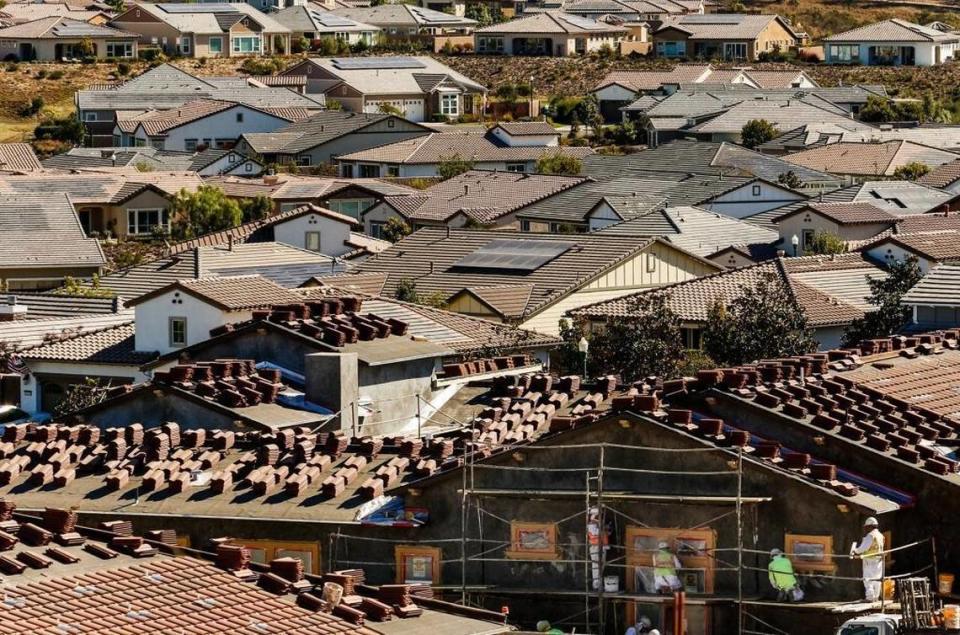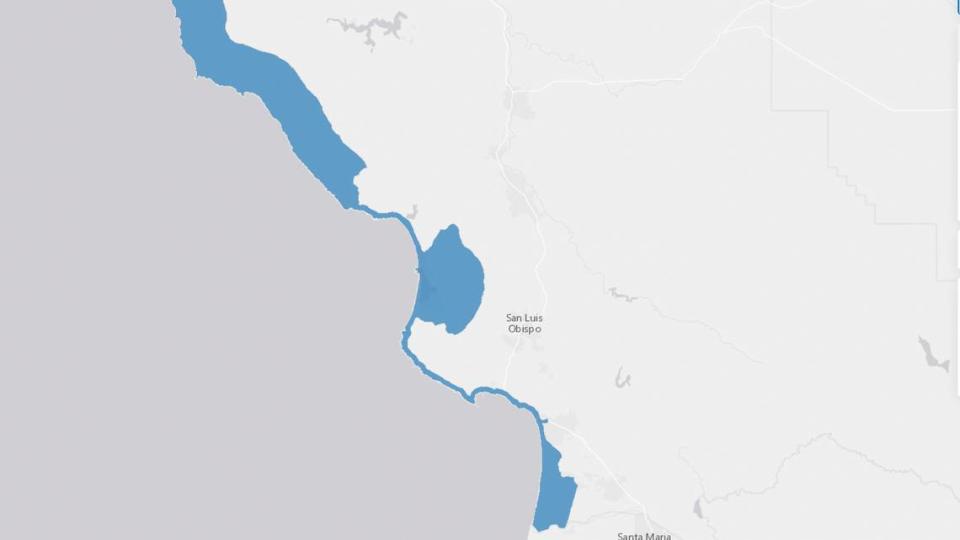Gavin Newsom just signed 56 housing bills into law. Which ones could help SLO County?
- Oops!Something went wrong.Please try again later.
San Luis Obispo County could reap the benefits of several new pieces of housing legislation.
A total of 56 new housing bills cleared California Gov. Gavin Newsom’s desk over the past two months, with standouts targeting affordable housing, security deposits and housing for middle-class residents.
Krista Jeffries, lead organizer of pro-housing group SLO County YIMBY (Yes In My Back Yard), said some of these bills have a chance to strengthen and expand existing housing laws into San Luis Obispo County for the first time.
“The direction that the state is taking is primarily taking the laws that have been proven to work in a lot of the inland areas ... and applying them to more projects and more areas,” Jeffries said.
Here are four housing bills with the greatest chance to impact San Luis Obispo County’s tight housing market.

Denser housing could be on the horizon
Jeffries said Assembly Bill 1287 is the new law she’s most excited about.
AB 1287 supports more housing for California’s so-called “missing middle” by making changes to the state’s density bonus laws. Those allow developers to exceed the number of housing units allowed by zoning laws as long as some of the units are affordable.
AB 1287 permits developers to apply for a moderate-income density bonuses in cases in which the developer has already included the maximum allowable number of low- or very low-income units in the project.
The new law changes the definition of “maximum allowable residential density” — the metric used to calculate how many units can be added using a density bonus — by defining it as the greatest number of units allowed under the zoning ordinance, specific plan, or land use element of the general plan.
Previously, existing density bonus laws defined this metric as the density increase over the otherwise maximum allowable gross residential density.
AB 1287 also requires local governments to grant additional bonuses when developers promise to make 24% of the total units affordable to lower income households, 15% of the total units affordable to very low-income households or 44% of the total units affordable to moderate-income households.
Under the law, local governments must grant four incentives or concessions to projects that include at least 16% of the units for very low-income households or at least 45% for people and families of moderate income.
“There’s a significant problem with creating housing that the people who make too much to qualify for low-income housing, but don’t make enough to cover market rents,” Jeffries said. “AB 1287 will encourage both market-rate and tax-credit developers to produce homes for these households who are otherwise doomed to ever-increasing commutes.”

New law could bring affordable housing to SLO County Coastal Zone
Senate Bill 423 is less of a new law than expansion to an existing law, Senate Bill 35.
Passed in 2017, SB 35 provides a streamlined approval process for multifamily infill housing projects in jurisdictions that are not on track to meet their Regional Housing Needs Assessment goals.
In an Aug. 3 analysis, the Terner Center estimated that 156 projects were approved between 2018 and 2021 using the law, comprising more than 18,000 new housing units.
That report called the law the “streamlining method of choice” for affordable housing developers, and now, it can apply to more parts of San Luis Obispo County than before.
SB 423 moves the 2026 sunset date that was would have invalidated SB 35 a decade down the line until 2036, and makes several adjustments to the original law.
Most importantly for San Luis Obispo County, SB 423 removes language in the earlier law that prevented these streamlined approvals for affordable housing projects from applying to developments in the Coastal Zone.
Many of San Luis Obispo’s populated areas along the coast fall within the Coastal Zone, which extends three miles into the ocean and a few hundred feet to five miles deep inland.
According to San Luis Obispo County Department of Planning and Building maps of the Coastal Zone, Cambria, San Simeon, Morro Bay, Los Osos, Avila Beach, Pismo Beach, Grover Beach and Oceano all fall fully or partly within the Coastal Zone boundaries.
“SB 35 has been almost solely responsible for tens of thousands of new homes, most of which are low-income apartments,” Jeffries said. “There’s no reason it shouldn’t apply in the Coastal Zone, where our hospitality workers need places to live.”

Law rezones land occupied by religious organizations, schools
Jeffries said local YIMBY members were particularly excited about Senate Bill 4, also known as the “Yes In God’s Back Yard” law.
Authored by California State Sen. Scott Weiner, SB 4 expands the amount of land available for affordable housing construction in California by re-zoning land occupied by religious organizations and nonprofit higher education for residential use.
Under SB 4, religious institutions and nonprofits can build affordable housing on their land without going through rezoning and discretionary approval.
With the exception of manager units, all homes built using SB 4 must be affordable, though 20% of the units may be for moderate-income households and 5% of the units may be for the staff of the independent institution of higher education or the religious institution that owns the land.
It also ensures the California Environmental Quality Act, a stumbling point for many housing projects in California, cannot stop these affordable housing projects on religious and nonprofit college property, according to the bill.
About 171,000 acres of land could become available for affordable housing development through SB 4, according to an analysis of the law by UC Berkeley’s Terner Center for Housing Innovation.
“As churches see declines in attendance across the board, SB 4 opens up thousands of acres of parking lots and vacant land so that faith communities can live out part of their missions in a very practical way,” Jeffries said.
No more high security deposits?
Another new law has the potential to help tenants across California, including San Luis Obispo County.
Starting July 1, 2024, California landlords are prohibited from asking for security deposits worth more than one month’s rent under Assembly Bill 12.
Previously, landlords were permitted to charge as much as two months’ rent for an unfurnished unit or three month’s rent for a furnished unit as a security deposit.
A full list of all 56 housing laws signed by Gov. Newsom can be found at the Office of the Governor of the State of California’s website.

